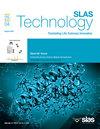基于人工智能的脑卒中神经损伤患者术后自我护理能力研究
IF 3.7
4区 医学
Q3 BIOCHEMICAL RESEARCH METHODS
引用次数: 0
摘要
据相关资料统计,中风是一种比较常见的脑血管疾病,其发病率高达185/10万~ 219/10万。持续护理可以改善脑卒中患者的生活质量,降低住院率。本研究以某地方三级甲等医院的患者为病例。采用人工智能对脑卒中出院患者进行持续护理干预,采用微信平台,定期随访,居家护理。之后,对收集到的数据进行后处理,对两组进行独立样本t检验。延长护理3个月后,干预组BI (Barthel指数)得分提高23.87分,抑郁自评量表得分下降9.12分。与对照组比较,患者的生活自理能力、抑郁状态、健康指导依从性、实验室指标均优于对照组,差异均有统计学意义(P <;0.05)。与对照组相比,干预组各指标得分的上升趋势更为显著。本文章由计算机程序翻译,如有差异,请以英文原文为准。
Postoperative self-care ability of continuous nursing based on artificial intelligence for stroke patients with neurological injury
According to the statistics of relevant data, stroke is a relatively common cerebrovascular disease, and its incidence rate is as high as 185/100,000 to 219/100,000. Continuous care can improve the quality of life of stroke patients and reduce the rate of hospital visits and hospitalizations. In this study, patients in a local hospital of third-grade class-A hospital were used as cases. Artificial intelligence was used to conduct continuous nursing intervention for the patients who were discharged from the stroke by using the WeChat platform, regular follow-up and home care. Afterwards, the collected data were given a post-processing, independent-samples t-test for two groups. After 3 months of extended care, the BI (Barthel Index) score of the intervention group has increased by 23.87 points, and the depression self-rating scale score has decreased by 9.12 points. Compared with the control group, the patients' self-care ability, depression state, compliance with health guidance and laboratory indicators were also better than those in the control group, and the differences were statistically significant (P < 0.05). Compared with the control group, the trend of increasing the scores of each index was more significant in the intervention group.
求助全文
通过发布文献求助,成功后即可免费获取论文全文。
去求助
来源期刊

SLAS Technology
Computer Science-Computer Science Applications
CiteScore
6.30
自引率
7.40%
发文量
47
审稿时长
106 days
期刊介绍:
SLAS Technology emphasizes scientific and technical advances that enable and improve life sciences research and development; drug-delivery; diagnostics; biomedical and molecular imaging; and personalized and precision medicine. This includes high-throughput and other laboratory automation technologies; micro/nanotechnologies; analytical, separation and quantitative techniques; synthetic chemistry and biology; informatics (data analysis, statistics, bio, genomic and chemoinformatics); and more.
 求助内容:
求助内容: 应助结果提醒方式:
应助结果提醒方式:


